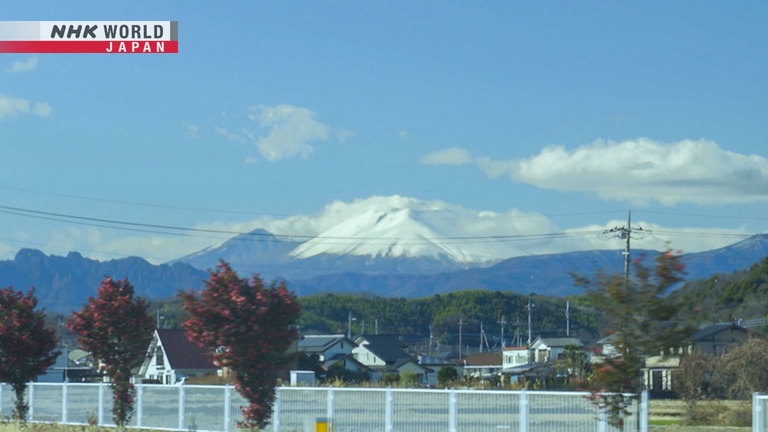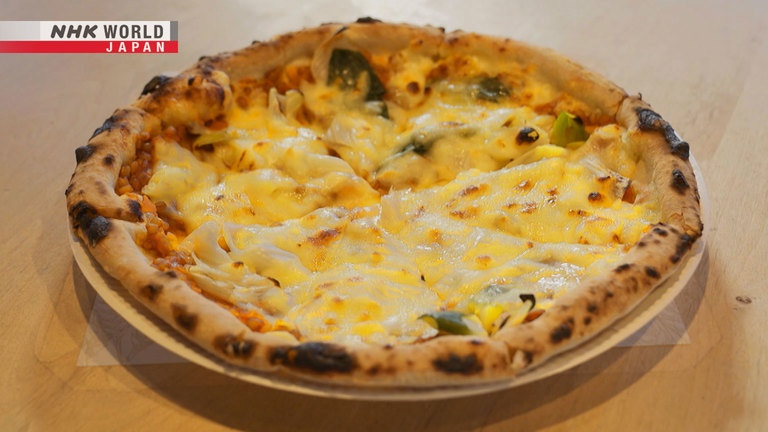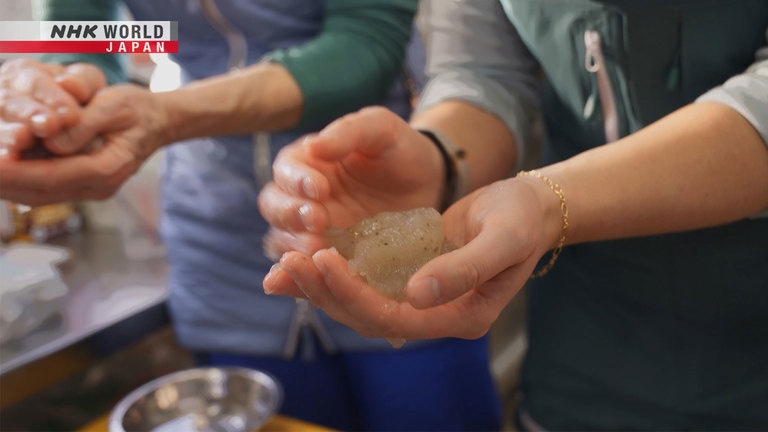GUNMA
To truly enjoy Gunma Prefecture, travel by car is key. We start from Takasaki, where the bullet train stops, and make our way to Kusatsu hot springs, with World Heritage sites and local food along the way.




Transcript
If you wish to really see Japan, get behind the wheel.
Notable places and interesting people are waiting just off the beaten path.
Today we steer northeast of Tokyo, to Gunma Prefecture.
Our jumpoff point is Takasaki Station, a Shinkansen bullet train stop.
Kusatsu is home to some of Japan's best hot springs.
Its waters are believed to help with almost any condition.
The area receives three million visitors a year.
Ready to get going?
Gunma is waiting for you.
Let's hit the road.
Welcome to Gunma!
I'm your navigation system.
I'll help make a good trip even better.
Here in Takasaki, you'll see Italian flags flying.
In fact, Takasaki is known for its pasta.
We'll get into that later!
Kusatsu Onsen is about 90 minutes northwest of Takasaki.
But why not take your time?
There's a world heritage site south of here.
Let me show you.
Enjoy the mountain scenery on the way.
That's Mt. Haruna.
It's one of Japan's sacred mountains.
And that snow-capped peak is Mt. Asama, one of five active volcanos in Gunma.
And thanks to the volcanoes, Gunma has 96 hot spring areas including Kusatsu.
And there's the World Heritage site just ahead.
This is Tomioka Silk Mill.
It was built in the 19th century as Japan's first mechanical silk reeling mill.
The latest technology was imported to support sericulture and silk production.
At one point, Tomioka was one of the largest silk reeling mills in the world,
with more than 500 employees.
You can still see traces of sericulture in Gunma.
Check out these buildings.
See the ventilation outlets on the roof?
They helped keep temperature and humidity just right for rearing silkworms.
One food played a major supporting role for workers in Japanese silk production.
Miso.
Miso is made with soybeans.
Barley with koji mold is added and the miso ferments for six months or more.
At this factory near the silk mill, residents have been making miso for 100 years.
There was a silk mill here,
like the Tomioka Silk Mill.
People started making miso
so the factory girls could have
something to warm them up.
They used to serve miso soup at lunch.
How about some cuisine from Gunma?
I know a rest stop where you can try a whole range of local specialties.
It's well worth a visit.
Here we are.
Have fun!
Farm-to-consumer produce.
Kanra has a signature fruit.
Kiwi fruit.
The fruit is harvested in the fall
and further ripened indoors.
Apples emit ethylene gas that
encourages ripening.
In two weeks the fruit is ready to eat.
Sweetness and tartness
are well balanced.
I hope lots of people
get a chance to try them.
Gunma has an
interesting processed food.
"Konnyaku."
90% of the konjac tubers used for
domestic "konnyaku" are grown in Gunma.
Gunma is also a big wheat producer.
That's why pasta is so popular here.
There's an Italian restaurant
in the food court.
They offer pizzas made with local wheat.
Our pizzas use local
Gunma ingredients.
I recommend our miso pizza.
Miso is the key to the secret sauce.
This type of miso is great for pizza.
The sauce goes well with any topping.
I have to confess, I was surprised
at how good miso tastes with cheese.
The pizza oven is authentic.
Miso pizza.
Welcome back!
You know, a lot of Kiwi fruit is grown in this area.
That orchard up ahead, for example.
And this one too.
This is what they look like at harvest.
Much of the land planted with Kiwi fruit was originally used
to grow a crop essential for sericulture.
Here it is.
Mulberry.
It was cultivated on a large scale to feed silkworms.
After sericulture declined, farmers turned to Kiwi fruit and konjac.
Both grow well in this soil.
Before we head for Kusatsu Onsen, I've got another detour for you.
It's a place where you can see how people used to live in Japan.
For that, we'll visit Michinoeki Takuminosato.
From Takasaki interchange, we take the Kan-etsu Expressway.
Then drive north toward the mountains for about an hour.
There's Mt. Akagi.
This volcano covers an area that's second only to Mt. Fuji.
It's a symbol of Gunma.
Gunma's climate can vary dramatically depending on where you are.
We'll exit the expressway at the Tsukiyono interchange.
Let's take a drive through this scenic town.
Residents work to preserve its old-time atmosphere.
These giant artworks are made with bales of rice straw.
Artists and local residents collaborated to create them.
Here's the michinoeki.
Go grab some Gunma goodness!
Established in 2005.
Visitors can try their hand
at making "konnyaku."
These are konjac tubers.
Combine with hot water and blend.
Personalize your creation.
Boiling water hardens the "konnyaku."
That's all there is to it!
It's kind of like making meatballs.
There's lots to see
and do near the michinoeki.
You'll find places to experience
traditional arts and culture.
A straw craft workshop.
Try your hand at making
rice straw sandals.
Rice straw is tough and durable,
ideal for many everyday uses.
Straw sandals.
Straw cushions.
This traditional craft is still handed down.
Few people know the techniques today.
But these sandals
are extremely comfortable.
People who try them really like them.
A mask-making workshop.
Masks were once believed to ward off evil.
They are made from paper,
And formed in a mold.
Choose your base design.
I put my heart
into every mask I make.
Paint your mask however you'd like.
Our final destination awaits.
The mountain drive to Kusatsu takes about 90 minutes.
It's a long way, but there's a soothing hot spring at the end of the trip!
Sunset.
Drive carefully, the road can get icy.
Kusatsu Onsen is on a plateau at a height of 1200 meters.
Temperatures average cool year-round, and in winter it gets below freezing.
We've arrived in Kusatsu!
These steaming waters are the town symbol.
Our trip took four hours and covered about 170 kilometers.
Have a relaxing dip in the hot spring!